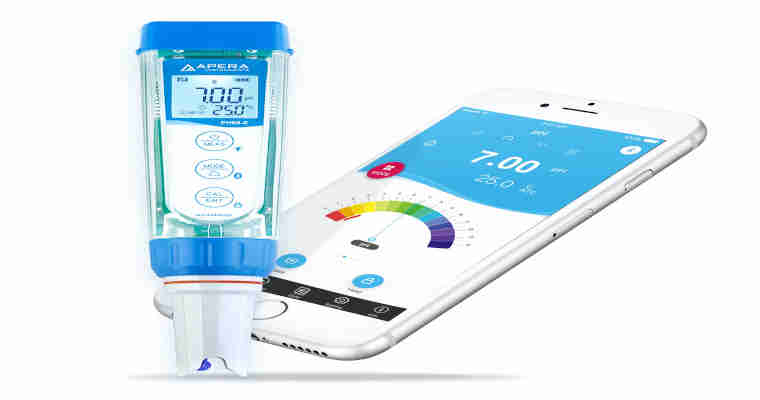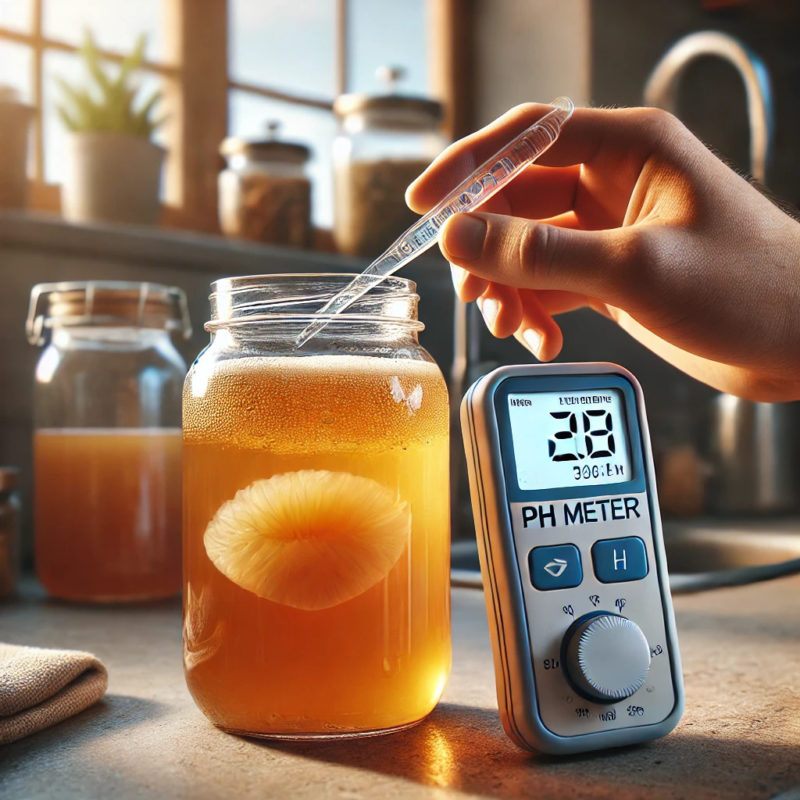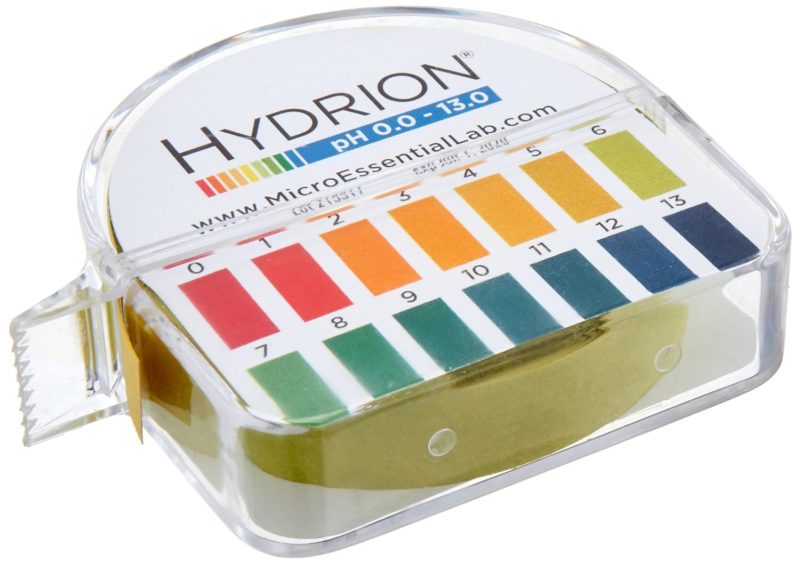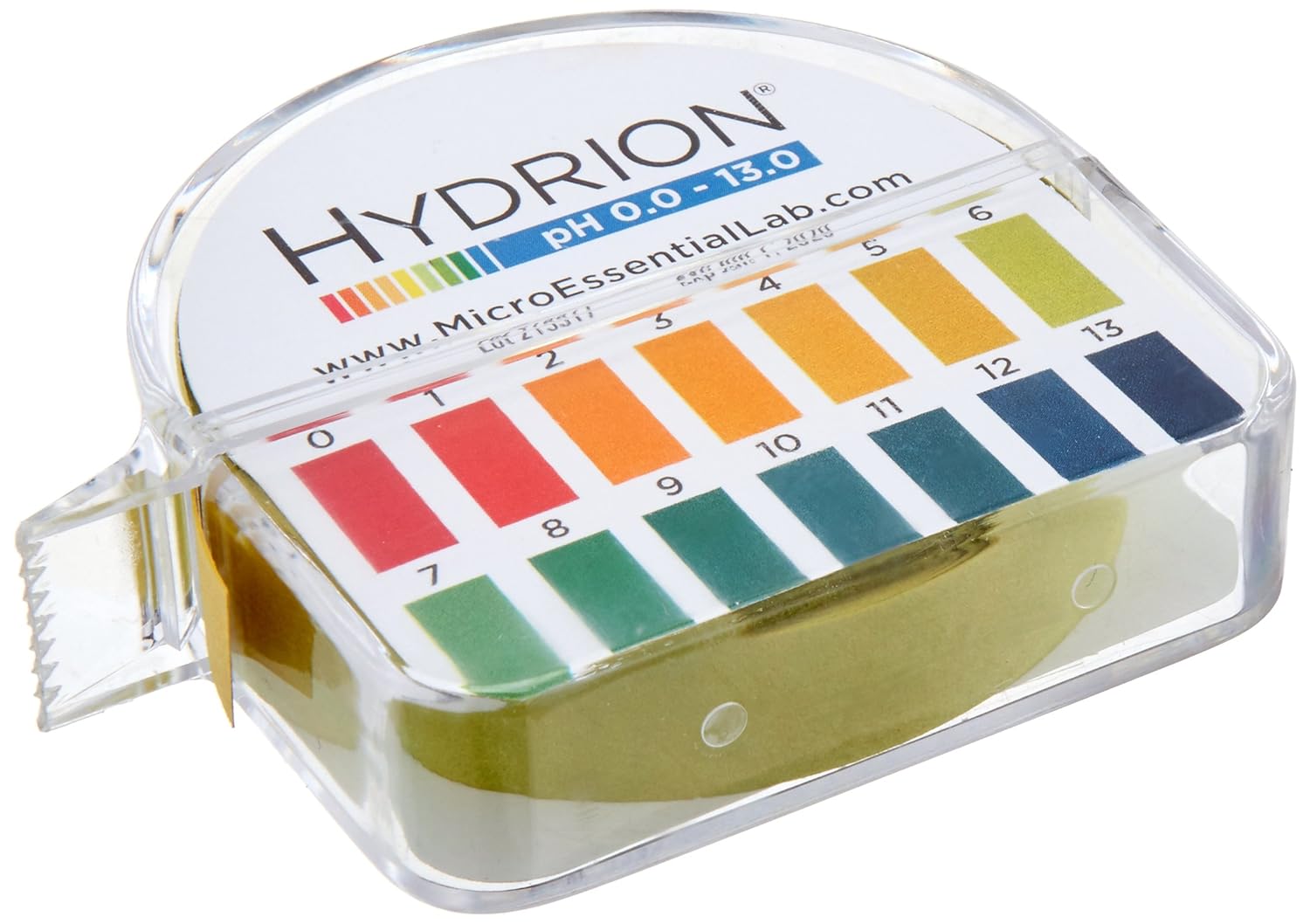Fermentation is a delicate process that relies on the perfect balance of conditions, particularly pH levels. Whether you’re fermenting vegetables, brewing kombucha, or making yogurt, monitoring the pH is critical to ensure a safe, successful, and tasty ferment. One of the most accurate ways to measure and maintain these pH levels is by using a pH meter.
In this article, we’ll dive into why a pH meter is essential for fermentation, how it helps in various types of fermentation, and how to use one for optimal results.

What is pH and Why Does it Matter in Fermentation?
The pH scale measures the acidity or alkalinity of a substance on a scale from 0 to 14, where 7 is neutral, below 7 is acidic, and above 7 is alkaline. Fermentation thrives in specific pH ranges depending on the type of food or drink being fermented. Monitoring and controlling pH levels ensures that the correct environment for microbial activity is maintained.
- In acidic conditions (low pH), beneficial bacteria and yeasts can thrive, while harmful pathogens are inhibited.
- In higher pH levels, the risk of contamination increases, which can lead to spoilage, bad flavors, or even unsafe ferments.
This is where the pH meter comes in. It allows you to measure the exact pH at different stages of fermentation, ensuring a safe and successful process.

Benefits of Using a pH Meter in Fermentation
Using a pH meter for fermentation offers several advantages over other methods, like pH strips. Here’s why it’s an essential tool:
1. Accurate Measurement
A pH meter provides highly accurate and real-time measurements, often with precision up to 0.01 pH. This level of accuracy is important when dealing with fermentation, where small changes in pH can significantly impact the outcome.
- For instance, during kombucha fermentation, the pH needs to drop below 4.6 to ensure a safe and properly fermented brew, free from harmful bacteria like botulism.
- In lactic acid fermentation (e.g., sauerkraut or kimchi), keeping the pH below 4.0 helps prevent spoilage and creates the tangy flavor you expect from these fermented foods.
2. Ensures Food Safety
Fermentation naturally preserves food, but only if it occurs within the right pH range. If the pH level doesn’t drop sufficiently, dangerous bacteria can grow. By using a pH meter, you can verify that your fermentation has reached the appropriate acidity level to ensure safety.
- For example, fermented vegetables should reach a pH of 4.6 or below to inhibit harmful pathogens.
3. Consistency in Flavor and Quality
Fermentation can be inconsistent when the pH isn’t properly monitored. Using a pH meter helps you maintain consistent acidity, which is key to replicating the same flavors batch after batch. This is especially useful in home brewing, yogurt making, or when fermenting products for sale.
4. Saves Time and Reduces Waste
Without a pH meter, you might need to rely on guesswork to determine when your ferment has reached the right acidity. This can lead to under- or over-fermentation, resulting in wasted ingredients and time. A pH meter provides a clear indicator of when your ferment is ready, minimizing trial and error.
Types of Fermentation That Benefit from a pH Meter
1. Vegetable Fermentation (Sauerkraut, Kimchi, Pickles)
Vegetable fermentation relies on lactic acid bacteria to lower the pH of the brine and create a safe, acidic environment. A pH meter can help ensure the vegetables are fermenting at the correct rate.
- The optimal pH for vegetable fermentation is around 3.5-4.0.
- Monitoring pH ensures that the Lactobacillus bacteria are active and producing enough lactic acid.
2. Kombucha
Kombucha is a fermented tea that goes through two stages of fermentation: first by yeast, which converts sugars into alcohol, and then by Acetobacter bacteria, which convert alcohol into acetic acid. Monitoring the pH is crucial for kombucha because the acidic environment keeps harmful bacteria out while promoting the growth of beneficial microbes.
- Kombucha pH typically starts around 5-6 and should drop to below 4.6 for safety.
- By using a pH meter, you can track this drop and know when your kombucha is ready.
3. Yogurt and Dairy Fermentation
In yogurt and other dairy fermentation, maintaining the right pH ensures the production of lactic acid, which gives yogurt its tangy flavor and thick texture. The pH meter can help you know when the fermentation is complete and when it’s safe to refrigerate the product.
- Yogurt typically reaches a pH of 4.5-4.8 during fermentation.
4. Home Brewing (Beer and Wine)
In beer and wine fermentation, pH control is crucial for achieving the desired flavor profile, mouthfeel, and shelf stability. A pH meter helps brewers track the pH throughout the fermentation and conditioning processes.
- Beer usually starts with a pH of 5.2-5.6 and gradually drops as fermentation proceeds.
- Wine typically ferments at a pH of 3.0-4.0 depending on the grape variety and winemaker preferences.
How to Use a pH Meter for Fermentation
Using a pH meter is relatively simple, but here are some tips to ensure accuracy and longevity:
- Calibration: Always calibrate your pH meter before use with standard calibration solutions (usually pH 4.0 and pH 7.0).
- Clean the Electrode: After each use, rinse the pH meter’s electrode with distilled water to prevent contamination.
- Storage: Store the pH meter with the electrode in a storage solution to prolong its life and accuracy.
- Measure at Key Stages: Measure the pH at the start, middle, and end of fermentation to track progress and ensure safety.

Choosing the Right pH Meter for Fermentation
When selecting a pH meter, look for the following features:
- Accuracy: Choose a pH meter with precision up to 0.01 pH, especially for critical ferments like kombucha or vegetable fermentation.
- Ease of Calibration: A meter with automatic calibration saves time and ensures accuracy.
- Waterproof Design: Since fermentation involves liquids, a waterproof meter is essential for durability.
- Portability: If you frequently move between fermenting stations, a portable, handheld pH meter is ideal.
For more details on the best pH meters, check out our guide to choosing the best pH meter for fermentation.
Conclusion
A pH meter is a must-have tool for any serious fermenter. It not only ensures the safety of your fermented foods and beverages but also allows for consistent, repeatable results. By monitoring pH levels throughout the fermentation process, you can take the guesswork out of fermentation and achieve the perfect balance of flavors and textures every time.
Investing in a good-quality pH meter is an investment in the success of your fermentation projects, whether you’re making kombucha, yogurt, pickles, or beer.
This site is a participant in the Amazon Services LLC Associates Program and contains affiliate links to products. We may receive a commission for purchases made through these links.
